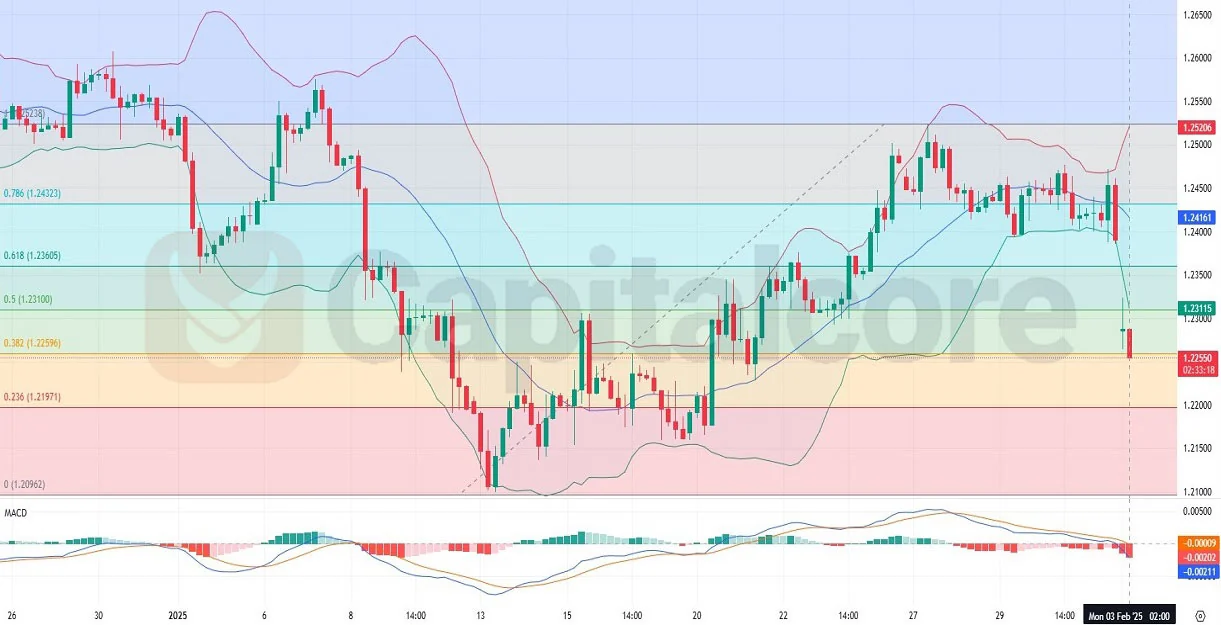- February 3, 2025
- Posted By: mia
- Category: Market News
Cable‘s Market Trend with Bollinger Bands Analysis
The GBP/USD currency pair, often referred to as “Cable,” represents the exchange rate between the British pound and the U.S. dollar. As one of the most traded forex pairs, it is highly influenced by macroeconomic data, monetary policies, and geopolitical developments. Today, the GBP/USD pair is expected to experience volatility due to several key economic events, including U.S. PMI, ISM Manufacturing Index, and Federal Reserve speeches, all of which could impact the dollar’s strength. On the British side, the UK Manufacturing PMI release will be pivotal in assessing the economic recovery momentum. Given the Federal Reserve’s stance on interest rates and the global risk sentiment, today’s USD-driven events could fuel further bearish momentum in GBP-USD, especially if the data indicates economic expansion in the U.S., thereby strengthening the dollar.
Chart Notes:
• Chart time-zone is UTC (+02:00)
• Candles’ time-frame is 4h.
After the market opened, the USD’s strength shifted the market sentiment, leading to a significant bearish gap and sharp price decline. The GBPUSD price has fallen drastically, forming large bearish candles, indicating strong selling pressure. The Bollinger Bands have expanded, suggesting increased volatility, with candles breaking below the lower band, signaling a strong downward trend. The price is currently hovering around the 0.382 Fibonacci retracement level, a critical support zone. A further breakdown could see GBP/USD testing the 1.2250 level or lower. The MACD histogram and signal lines confirm the bearish momentum, with the MACD crossing downward and the histogram showing increasing negative bars, reinforcing the downtrend continuation outlook. Unless a strong reversal occurs, GBP USD is likely to remain under pressure in the near term.
•DISCLAIMER: Please note that the above analysis is not an investment suggestion by “Capitalcore LLC”. This post has been published only for educational purposes.
